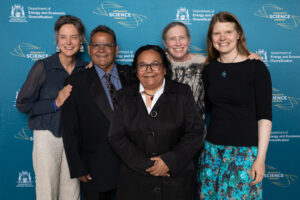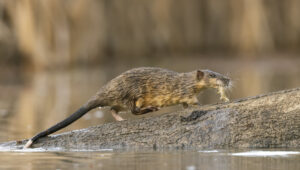Few trees can find a way to survive in the liminal space where dry land meets the sea. Mangroves are the exception.
These impressively resilient trees can withstand rapidly shifting tides, skyrocketing salinity levels and oxygen-barren soils to grow for hundreds of years.
But how do they do it?
THE INTERTIDAL ZONE
The intertidal zone differs from most ecosystems in that it’s constantly changing.
These regions are defined as the area of land that is exposed at low tide but submerged at high tide.
Mangroves grow in soil few other plants can handle.
To do this, mangroves have evolved an arsenal of unique and highly effective tools.
PNEUMATO-WHAT?
At first glimpse, a pneumatophore could easily be mistaken for a snake poking its head out of a burrow.
But they are the mangrove’s roots. They have evolved to emerge vertically to access oxygen, which is lacking in the mud that surrounds them.
The pneumatophores act as snorkels for the mangroves. Gaseous exchange – crucial to plant growth – would be simply impossible without them.
[credit: author]
VIVIPARY: WHAT WE HAVE IN COMMON
Mangroves reproduce in an unconventional way.
The ever-resourceful trees make use of a process called vivipary. The word stems from the Latin for live birth.
Once pollinated, mangroves generally grow small, strange fruit called propagules at the ends of their branches.
When they are ripe, propagules drop from the branch as a ready-to-go mangrove plant.
As they bob along in the water, propagules slowly unfurl light-sensitive leaves and begin to sprout roots – tiny trees ready to brave the wild.
[credit: author]
Eventually, the propagule becomes lodged in the soil, and if conditions are right, a new mangrove tree begins to grow.
The process is similar to propagating your house plants by snipping a stem in the right spot and placing the cutting into water.
In some mangrove species, like those found in Shark Bay, the process is akin to cloning. Despite being right at the edge of their feasible habitat, these mangrove forests still have sufficient genetic diversity due to abnormally high rates of DNA mutation.
Vivipary isn’t restricted only to flora either. Humans even reproduce via vivipary but in a slightly different way to mangroves.
CRUCIAL COASTAL ECOSYSTEMS
Tropical and subtropical mangrove swamps are crucial coastal ecosystems.
They play critical roles in maintaining health and productivity among other key functions.
Mangroves are nurseries for large amounts of fish species all over the world where larval fish can hide among the twisted roots. Mangroves can protect coastlines from damage by tsunamis and variable sea levels and are tremendously crucial CO₂ sinks.
But globally, mangrove populations are shrinking.
In 2015, a wobble in the Moon’s orbit caused the death of 40 million mangroves around the world. This 18-year variation in the Moon’s orbit led to record high tides in some places and unprecedented low tides in other areas.
Our oceans are being dramatically altered by climate change. Although mangroves are incredibly adaptable, they can only withstand so much.









